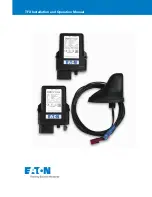
Site considerations
98-175666-C
Chapter 2: Installation
2-13
2.2.4 Interference from radar, GPS/GNSS, L-band and other
transmitters
The shipʼs radar and high power radio transmitters may compromise the ADU
performance. RF emission from radars might actually damage the ADU. The ADU itself
may also interfere with other radio systems.
Radar
It is difficult to give exact guidelines for the minimum distance between a radar and
the ADU because radar power, radiation pattern, frequency and pulse length/shape
vary from radar to radar. Further, the ADU is typically placed in the near field of the
radar ADU and reflections from masts, decks and other items in the vicinity of the
radar are different from ship to ship. But it is possible to give a few guidelines. Since a
radar radiates a fan beam with a horizontal beam width of a few degrees and a vertical
beam width of up to +/- 15°, the worst interference can be avoided by mounting the
ADU at a different level – meaning that the ADU is installed minimum 15° above or
below the radar antenna. Due to near field effects the benefit of this vertical
separation could be reduced at short distances (below approximately 10 m) between
radar antenna and the ADU. Therefore it is recommended to ensure as much vertical
separation as possible when the ADU has to be placed close to a radar antenna.
The minimum acceptable separation (d min.) between a radar and the ADU is
determined by the radar wavelength/frequency and the power emitted by the radar.
The tables below show some “rule of thumb” minimum separation distances as a
function of radar power at X and S band. If the d min. separation listed below is
applied, antenna damage is normally avoided. The separation distance for C-band (4-8
GHz) radars should generally be the same as for S-band and X-band radars.
“d min.” is defined as the shortest distance between the radar antenna (in any
position) and the surface of the ADU.
Note
Do not place the antenna close to interfering signal sources or receivers. For
allowed distances to other transmitters see Figure 2-13. It is recommended to
test the total system by operating all equipment simultaneously and
verifying that there is no interference.
Figure 2-12: Interference with the vesselʼs radar
Min. 15°
Min. 15°
Radar
d min
















































